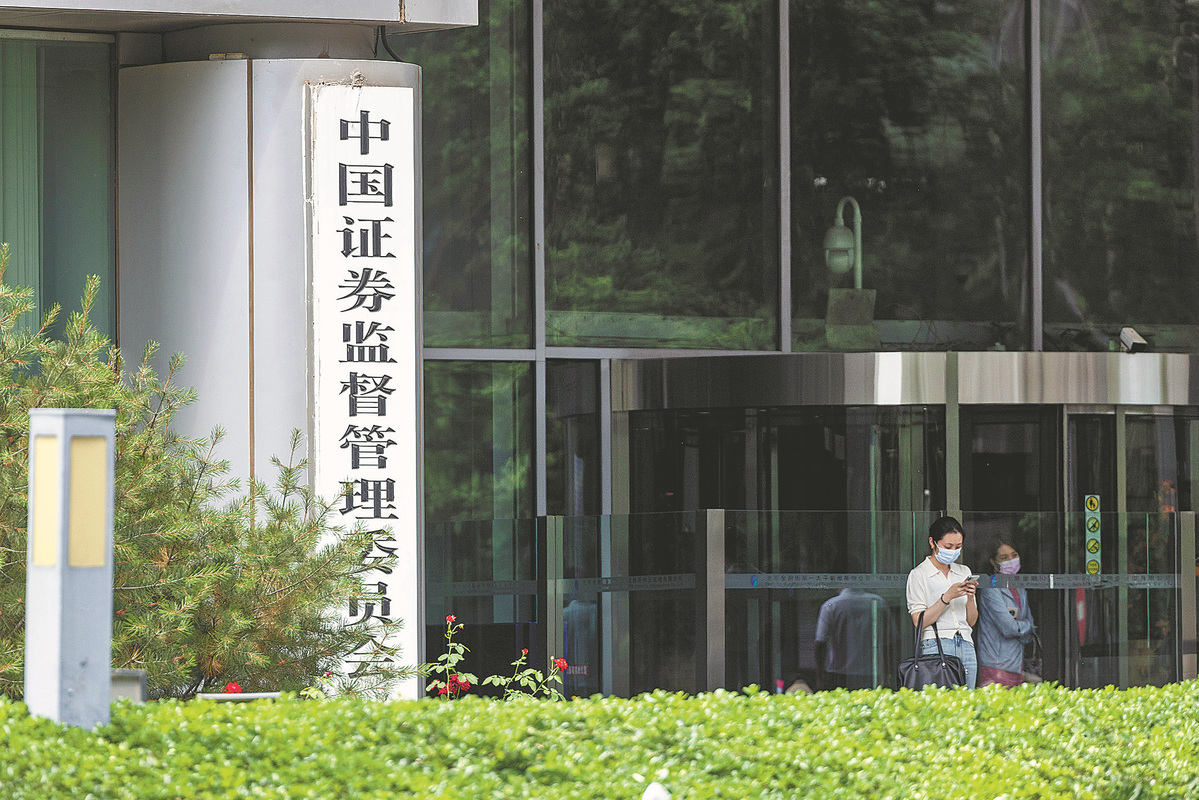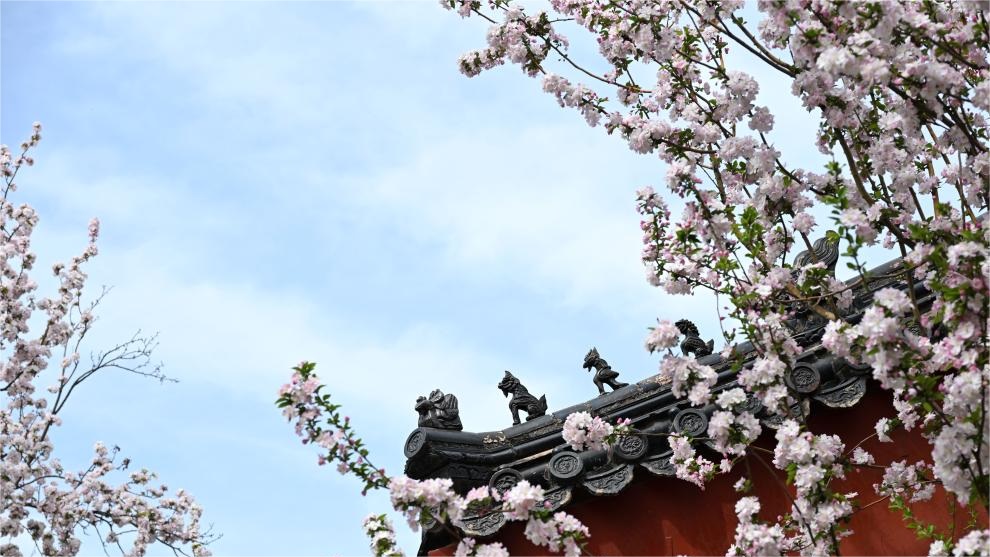Capital market set for sound development
Now that the first quarter of this year is history, insiders of China's A-share market are convinced the challenges and chaos that seemed daunting at the beginning of the new year remain stiff, with quick solutions appearing unlikely.
Investors' nerve was initially shaken by the benchmark Shanghai Composite Index sinking to below 2,700 points. The bumpy trading eventually ended in early February with the "national team" — mainly the sovereign wealth fund's investment arm Central Huijin — injecting more liquidity and regulators straightening up trading rules. This helped the SCI regain the psychological fulcrum of 3,000 points shortly after Spring Festival in early February.
While trading becomes active again as indexes rise, talk on the high-quality development of the A shares, on which will depend a sustained long-term bull market, has picked up heat again.
Looking back at the chaos at the beginning of the year, market mavens blamed it all on inadequate market liquidity. The collective redemption of mutual fund products due to their declining net asset value, the collective knock-in of auto-callable notes (meaning investors needed to increase investment or confront forced closing of positions for this structured product) and the closing positions for many margin trading-based products, had dragged down the SCI and seriously impaired market sentiment, resulting in panic and a sell-off.
Now, the focus has shifted to the anticipated introduction of a stock market stabilization fund.
Liu Yuhui, a council member of the China Chief Economist Forum, compared today's Chinese stock market to a "voting machine" that reflects investor confidence. The anticipated market stabilization fund, or even a simple announcement about its introduction, will likely profoundly improve investor sentiment, he said.
"When the market is jittery, the stabilization fund may not make any move at all. The fund itself serves as a symbol of bolstered confidence. People do not really care about how much money is poured into the stabilization fund. The felt solid government presence behind the fund is what investors truly value," he said.
Market entities, nevertheless, have their own expectations of the fund's corpus. CITIC Securities estimates that a stabilization fund valued between 2 trillion yuan ($277 billion) and 5 trillion yuan will be enough as such a fund usually takes up 3 percent to 6 percent of the stock market value in other mature markets.

A view of the China Securities Regulatory Commission headquarters in Beijing. CHINA DAILY
"The introduction of a stabilization fund is quite necessary and China is ready for that," said Li Xunlei, chief economist of Zhongtai Securities.
Another hot topic to figure in market buzz is the possible replacement of the current T+1 trading mechanism with a T+0 mechanism after the A-share market stabilizes. The T+0 system will allow purchase and sale of the same shares within the day.
Independent stock market analyst Pi Haizhou said one major merit of the T+0 mechanism is that it can largely increase investors' capital efficiency and boost trading activity.
He Qiang, a professor of the School of Finance at the Central University of Finance and Economics, said the T+0 mechanism can help retail investors to reduce losses by taking prompt corrective action upon wrong moves. Trials can be first undertaken for trading blue-chip large-caps or at the Beijing Stock Exchange, the youngest of the bourses on the Chinese mainland, he said.
"Futures trading, which entails higher risks, is conducted under the T+0 mechanism all over the world, only to avoid risks by reducing losses on a daily basis," he said.
Tian Xuan, associate dean of Tsinghua University's PBC School of Finance. said that the Shanghai and Shenzhen bourses are the only two exchanges using the T+1 trading mechanism. The T+0 mechanism is adopted at 42 stock exchanges across the world.
"Under the T+1 mechanism, institutional investors can use stock index futures, exchange-traded fund arbitrage and reverse margin trading to cover losses or even seek gains on days of higher market fluctuations. But retail investors are deprived of such choices. They are not able to make up for or reduce their losses under the current T+1 mechanism within the day once they make mistakes," said Tian.
"This is contrary to the principle of market fairness, and is not conducive to the financial market's stability."
Tian further said China briefly used the T+0 mechanism at the beginning of its modern-era stock market. But it shifted to T+1 in 1995 due to the then inadequate supervision and legal system and the limited choices in the stock market.
"But the Chinese capital market has made substantial progress over the past decade. The supervision, legal system, investable target and financial tools have all been completed. I think it is time to talk about restoring the T+0 mechanism," he said.
Voices are growing that China should improve its listed companies' quality. Part of regulators' efforts to address such concerns has been to tighten their grip over IPOs. This, many market mavens said, can help control the quality at the very beginning.
One month after taking over as chairman of the China Securities Regulatory Commission, Wu Qing was outspoken in his criticism of questionable market practices. During a news conference at this year's two sessions in early March, he said "profiteering should not be the purpose of IPOs". That was in keeping with his reputation of being a no-nonsense official: Wu was known for his stern attitude toward violations and illegal activities during his earlier stints at the top market watchdog.
"While adhering to laws and regulations, stricter evaluation of IPO registration must be taken," said Wu.
On Aug 27, the CSRC had announced that it will tighten the pace of IPOs. Only 26 IPOs had been reported as of March 22, down nearly 50 percent year-on-year. But at least 670 companies have been waiting for the CSRC's evaluation of their IPO applications. In an unprecedented development, at least 75 companies have withdrawn their IPO applications on their own till date.
"In some cases, IPO had come to mean large-scale profit distribution. Under such circumstances, self-discipline will not suffice as stakeholders will be easily enticed by huge profits," said Xue Hongyan, deputy director of the Star Atlas Institute of Finance.
In this sense, a tighter grip over who enters the Chinese stock market is quite important. It is with a clearer accountability mechanism and strengthened punishment that people violating laws and regulations may eventually face the results of bankruptcy. Only serious crackdowns can deter fraudulent issuances or financial frauds, said Xue.
Both entry into and exit from the A-share market should be improved, experts said. At the March news conference during the two sessions, Wu of the CSRC said that stricter delisting standards will be adopted to ensure that the disqualified ones will be removed from the market. The regulator will also encourage weak or unhealthy companies to delist voluntarily, he said.
By March 29, six companies had delisted this year, on a par with the quarterly high reached in the first quarter of 2021.
Yang Chengzhang, chief economist of Shenwan Hongyuan Securities, said delisting criteria should be differentiated for different A-share boards. Private equity firms and secondary funds should be more actively included in the regional equity trading markets so that over-the-counter market can receive delisted companies.
"Delisting is of much importance in advancing the high-quality development of the Chinese capital market. More attention should be directed to delisting and companies' restructuring so that supply and demand can be more reasonably balanced in the stock market," he said.
"Efforts should be made to help local governments, companies and investors understand delisting in a more comprehensive way. Delisting is just a common practice in the capital market. It should not be considered a smirch on companies' reputation or business."
Regional financial regulators in Beijing and Shanghai were in the spotlight in late March, mainly because of their on-site inspections of a large number of mutual funds. Although they clarified that these were regular inspections, "not raids", their actions were conducted shortly after the CSRC said in a guideline released on March 15 that daily supervision, on-site inspections and law enforcement should be strengthened.
Data from the Asset Management Association of China showed that the size of the Chinese mutual fund market had approached 30 trillion yuan by the end of February. Up to 200 million Chinese had invested in the country's stock market, and 600 million Chinese had accessed the capital market by purchasing fund products sold via various platforms, said Yang Delong, chief economist of Shenzhen-based First Seafront Fund.
"Therefore, the sound development of the Chinese capital market is not only about the wallets of hundreds of millions of Chinese, but also the sustainability of societal development. Supervision should be strengthened and confidence should be consolidated," Yang said.
Photos
Related Stories
Copyright © 2024 People's Daily Online. All Rights Reserved.









